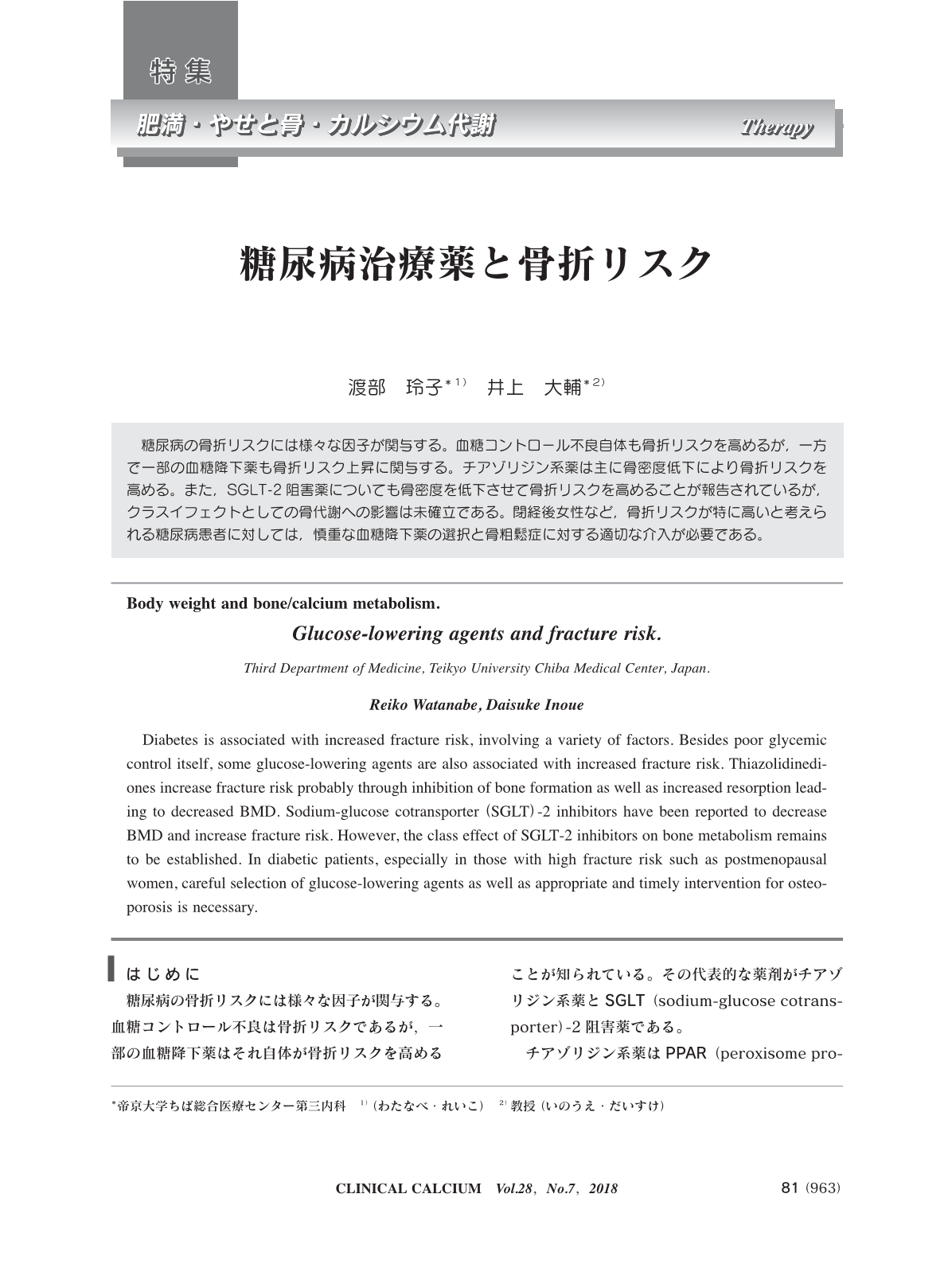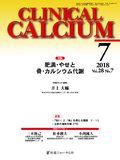Japanese
English
- 有料閲覧
- Abstract 文献概要
- 1ページ目 Look Inside
- 参考文献 Reference
糖尿病の骨折リスクには様々な因子が関与する。血糖コントロール不良自体も骨折リスクを高めるが,一方で一部の血糖降下薬も骨折リスク上昇に関与する。チアゾリジン系薬は主に骨密度低下により骨折リスクを高める。また,SGLT-2阻害薬についても骨密度を低下させて骨折リスクを高めることが報告されているが,クラスイフェクトとしての骨代謝への影響は未確立である。閉経後女性など,骨折リスクが特に高いと考えられる糖尿病患者に対しては,慎重な血糖降下薬の選択と骨粗鬆症に対する適切な介入が必要である。
Diabetes is associated with increased fracture risk, involving a variety of factors. Besides poor glycemic control itself, some glucose-lowering agents are also associated with increased fracture risk. Thiazolidinediones increase fracture risk probably through inhibition of bone formation as well as increased resorption leading to decreased BMD. Sodium-glucose cotransporter(SGLT)-2 inhibitors have been reported to decrease BMD and increase fracture risk. However, the class effect of SGLT-2 inhibitors on bone metabolism remains to be established. In diabetic patients, especially in those with high fracture risk such as postmenopausal women, careful selection of glucose-lowering agents as well as appropriate and timely intervention for osteoporosis is necessary.



